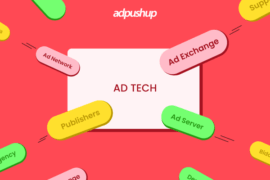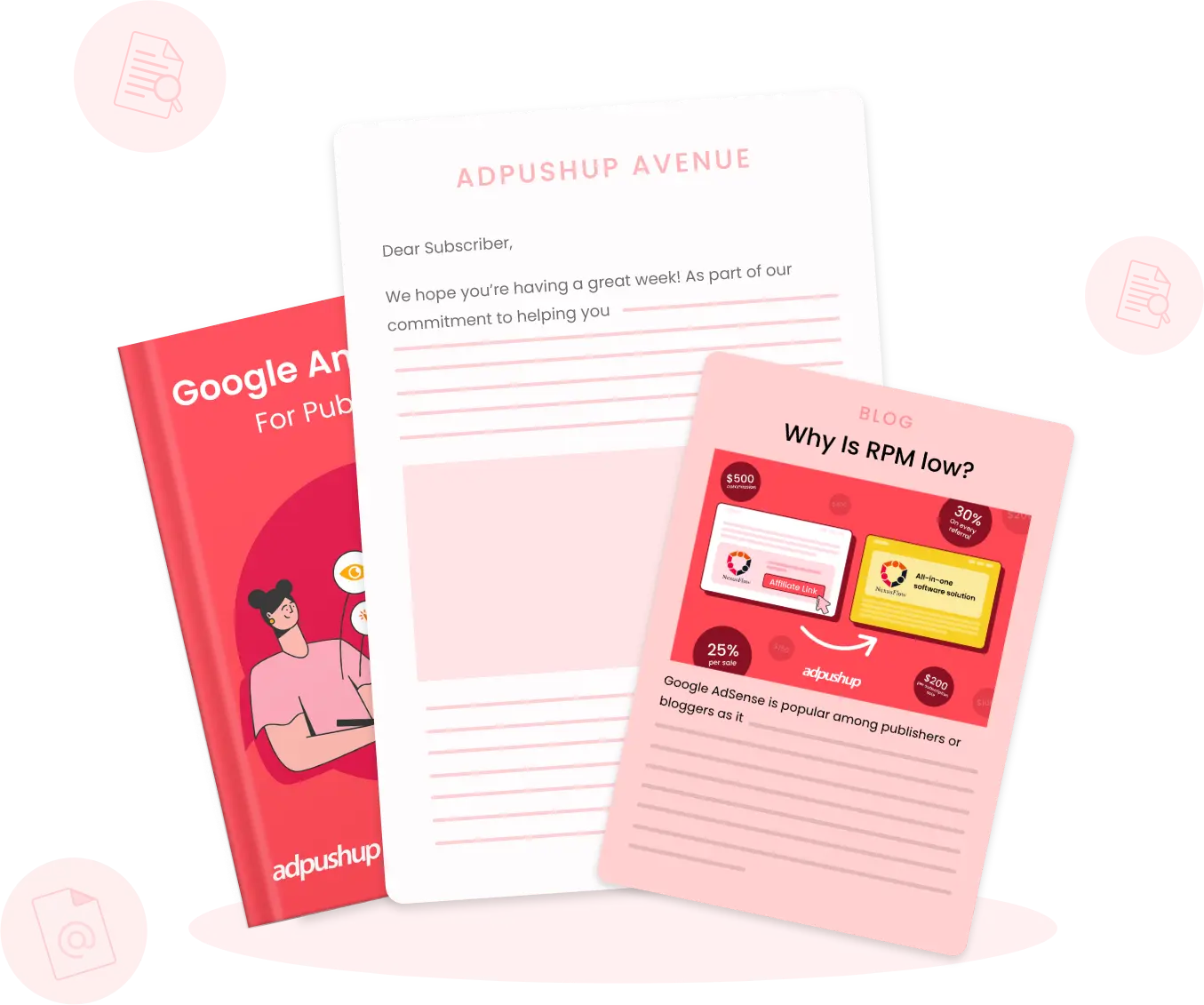As fast as the digital advertising industry is growing, it needs to be governed by certain standards so that the multitude of parties can work together in harmony.
Interactive Advertising Bureau (IAB) functions as such a body in the ad tech industry and creates standards and guidelines for the smooth functioning of the industry.
Also Read: A Primer on IAB and MRC Viewability Standards
Since IAB standard ad sizes are of great significance in the digital advertising industry, IAB is responsible for creating standards and guidelines for ad units/sizes. This ensures that the buying and selling process of the inventory becomes easy for both publishers and advertisers, given that they are adhering to IAB standard ad size.
In this blog post, we are going to talk about IAB standard ad units and the new IAB standard ad unit portfolio that was released in 2017.
Also read: IAB New Ad Portfolio: Why do Ad Creatives Need to be LEAN
IAB Standard Ads
An IAB standard ad size can be defined as an ad unit that is seen on most websites. Currently, three sizes are considered standard ads- Leaderboard (728×90), medium rectangle (300×250), and skyscraper (160×600).
These ad units are used extensively in the ad tech industry and are considered the most profitable ad sizes. Publishers can implement these ads easily, their demand is always high from the advertisers, and they help in increasing the earning potential of publishers.
It should be noted that IAB’s ad portfolio also recognizes several other ad sizes, including billboard (970×250), smartphone banner (300×50, 320×50), and portrait (300×600). However, the above-mentioned ad sizes are used the most in the digital advertising industry.
Publishers should ideally experiment with different ad sizes to see which ones are giving them the highest returns. Moreover, using different ad sizes can also help them deal with banner blindness, which is a problem that arises while leveraging popular or common ad sizes.
Also Read: Top Performing Banner Ad Sizes
IAB New Ad Portfolio
Guidelines that define the New Ad Portfolio were developed by the IAB Tech Lab. These standardsof ad size focus on enhancing the advertising experience across multiple platforms, including mobile apps, websites, and social media.
The New Ad Portfolio also focuses on ‘new media experiences’ such as virtual reality ads and augmented reality ads.
At the present time, user intent and user privacy are the prime reasons for the majority of changes that are occurring in the ad tech industry.
The emergence of privacy laws such as GDPR and CPRA and demise of third-party cookies are heavily focused on protecting users from any kind of fraud. Due to such developments, the interest of the user is central to the new IAB standard ad unit portfolio.
Also Read: How Different Browsers are Handling Web Browser Cookies
- Since the user’s key aim is to consume the content on websites, advertisements should not be disruptive in any way.
- User experience is of high priority and it can be enhanced by giving users control over the kind of advertising experience they want to have. For example, providing clear close buttons on the creatives can be a good way to put the user in charge.
- Better user experience also means that ads should render as fast as possible on a website, which is why IAB’s New Ad Portfolio also focuses on faster load performance.
Note: “The IAB New Ad Portfolio replaces all the previous creative display guidelines for mobile and desktop – including the Universal Ad Package (UAP), rich media units, and other ad units’ related guidance.”
Flexible Ads
A major feature of new ad units as described in the New Standard Ad Unit Portfolio is that they are based on aspect ratio as opposed to the previously followed norm of fixed pixel sizes.
Users these days are actively using multiple devices for browsing. Furthermore, screen sizes vary for similar devices as well. Due to this, advertisements need to adapt to different devices and screen sizes. This is why flexible ad units are important.
A flexible ad unit will make sure that ads are delivered properly across different screen sizes and can also be integrated with responsive website designs. Flexible ad units basically maintain their aspect ratio and adjust according to the screen size.
In addition to making sure that the original sanctity of creatives is maintained to provide good page experience across multiple devices to users, flexible ad units also enhance operational efficiency for publishers.
Also Read: What are Core Web Vitals and how they can enhance page experience
LEAN Ads
Other than flexible ads, the new IAB standards also put emphasis on LEAN (light, encrypted, AdChoices supported, and non-invasive) ads. As we already mentioned before, the IAB New Standard Ad Unit Portfolio prioritizes user experience by ensuring that users have control over what they are consuming and for how long and respecting their choices.
This is essentially done by serving users with LEAN ads. For example, lightweight ads will make sure that page latency is minimized and ads are rendered quickly. Similarly, non-disruptive ads will ensure that the user is able to consume the main website content without any hindrance.
Publishers can go through the IAB New Standard Ad Unit Portfolio to get a better understanding of Flexible and LEAN ad specifications.
IAB Standard Sizes for Ads
While browsing the vast expanse of the internet, you’ll notice that the most common ad formats are the Leaderboard, the medium rectangle, and the skyscraper. These ad sizes have become staples on web pages, and they undoubtedly serve their purpose effectively.
However, the New Ad Portfolio brings more ad sizes. In addition to the usual suspects, it introduces a variety of other ad sizes, such as the smartphone banner, available in both 300×50 and 320×50 dimensions, the expansive billboard measuring 970×250, and the elegant portrait ad with a dimension of 300×600.
Now that many options are available, publishers should consider stepping beyond their comfort zones and experimenting with different ad sizes. This diversification can be the key to unlocking higher returns and engaging audiences in fresh and innovative ways.
One significant advantage of using various ad sizes is their potential to combat the looming threat of banner blindness. This takes place when internet users become so accustomed to the standard ad sizes that they subconsciously filter them out, rendering them less effective over time.
By incorporating a mix of ad sizes, publishers can grab the attention of their target audience and keep them engaged, effectively countering banner blindness.
Also read: Google Starts ‘Subscription Lab’, Launches New Fact-Checking Tools
What are the Benefits of the IAB Standard?
Streamlined Ad Inventory Creation
IAB standards simplify the process of creating ad inventory. By providing clear guidelines and specifications, they ensure that ad units can be developed and deployed more efficiently.
Responsive Ad Sizing
The IAB New Ad Portfolio approach adopts sizes based on aspect ratio rather than fixed pixel dimensions. This flexibility allows ad units to adapt and display consistently across a wide range of devices, including smartphones, tablets, and desktops. This responsive design ensures that the ads maintain their visual integrity, regardless of the screen size.
Guidance for Emerging Technologies
IAB extends its influence beyond traditional advertising, offering guidelines for publishers venturing into new technologies such as social media, augmented reality, virtual reality, and even emoji-based advertisements. This support and expertise can be invaluable for publishers exploring innovative and engaging ad formats.
Improved User Experience
Next, the new ad portfolio places a strong emphasis on faster loading performance. Speedy ad rendering not only benefits publishers by reducing bounce rates but also enhances the overall user experience. Users are more likely to engage with content that loads quickly, leading to increased ad effectiveness and viewer satisfaction.
Optimized Earnings
For publishers seeking to monetize their websites through ad networks like Google AdSense, adhering to IAB standards can significantly boost their display ad earnings. These standards are designed to maximize the compatibility and effectiveness of ads across various platforms, increasing the likelihood of higher click-through rates and conversions.
About IAB and IAB Tech Lab
IAB was founded in 1996 and has now become a leading association in the interactive advertising field. Over 650 media and technology enterprises are members of this association. IAB majorly creates standards and guidelines for the advertising industry. Other than this, the association also focuses on conducting research in the field of interactive advertising and educating the people working in the advertising industry.
It should be noted that IAB ‘recommends’ publishers, advertisers, and other parties in the advertising industry to follow the standards and practices that they create, however, it is not a mandatory requirement. But since the leading companies in the advertising industry are members of the IAB, publishers will certainly benefit if they are working in conjunction with the IAB recommended practices and guidelines.
IAB Tech Lab
IAB Tech Lab is an international association that is responsible for developing technical standards for the advertising industry. This is to ensure that the multiple parties that are part of the supply chain are able to work together in harmony. Additionally, if the majority of participants in the advertising industry adhere to standards developed by IAB tech lab, the industry can witness consistent growth.
Also read: Decrypting Ad Tech with Amit Shetty, Sr. Director of Product, IAB Tech Lab
Final Thoughts
While publishers do not have to follow the IAB standard ad size specifications as a rule, it is definitely the ideal way forward in the digital advertising landscape. If web designers would have to create different ad sizes for different websites, the situation would become highly chaotic.
Furthermore, publishers’ ad revenue can take a serious hit if they are not adhering to IAB standards. Therefore, in order to stay relevant in the industry and make good profits, publishers should stick to ad units that are used universally.
Frequently Asked Questions
The common IAB Standard Sizes are 300×250 medium rectangle, 180×150 rectangle, 160×600 wide skyscraper, and 728×90 leaderboard.
IAB ad units are used extensively in the ad tech industry and are considered the most profitable ad sizes. Publishers can implement these ads easily, their demand is always high from the advertisers, and they help in increasing the earning potential of publishers.
Some of the best-performinganner ad sizes are as follow:
300×250 – Medium rectangle
336×280 – Large rectangle
728×90 – Leaderboard
320×50 – Mobile leaderboard

Deepak has a keen eye for detail and a deep understanding of the ad tech landscape. Whether it’s through in-depth articles, thought-provoking insights, or compelling storytelling, he’s dedicated to helping people navigate the complex world of ad tech with the simplicity of his words.







